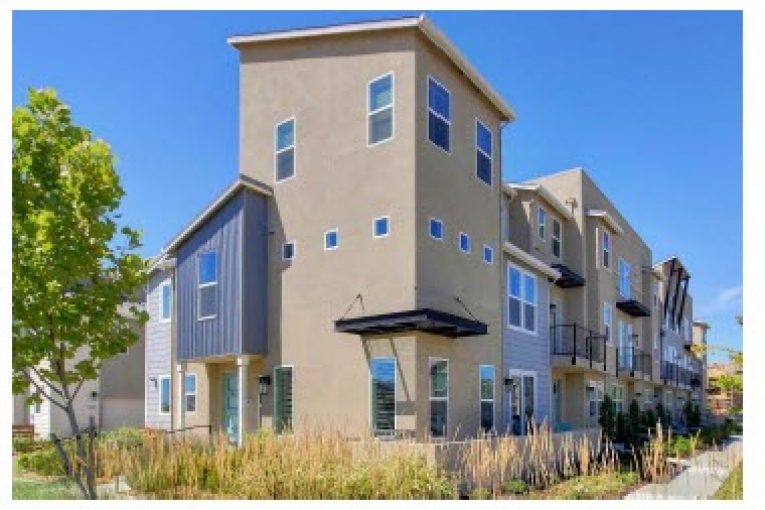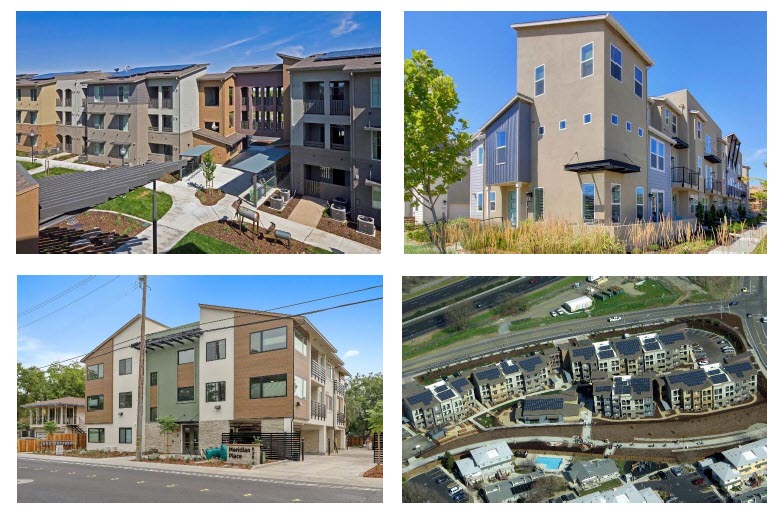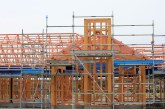

By David M. Greenwald
Executive Editor
Much of the last few weeks, housing attention has focused on Berkeley and the implications of CEQA.
In a biting op-ed in the San Francisco Chronicle, Matthew Fleischer writes, “California’s Supreme Court confirmed on Thursday what most of us who live here already knew: Neither a deadly pandemic that has exacerbated entrenched inequalities, nor the impending threat of a climate disaster, has been able to pry loose the vice-grip of NIMBYs with free time and disposable income from the levers of state power.”
He continues, saying “the justices codified the notion that more students on campus are a form of environmental pollution.”
Fleischer traces this to the 1960s and early 1970s environmental movement which was focused on a doomsday scenario of “The Population Bomb.”
“’Population stabilization’ was trumpeted as a priority, which manifested in some good ideas (family planning and abortion rights) and some dubious ones (a de-emphasis on growth in large cities),” he argues. “In other words, for a highly desirable migration destination like California’s coastal cities, ‘not in my backyard’ was viewed as an environmentally beneficial response to the global problem of overpopulation. Seen in that context, the UC Berkeley rulings’ people-as-pollution framework makes perfect sense.”
The problem however, is “[j]ust because CEQA is an environmental law doesn’t mean its impacts are inherently good for the environment. And some growth — like dense student housing near campus and transit — doesn’t need exhaustive mitigation.”
It will be interesting to see if this becomes the catalyst finally to change that law.
In the meantime, veteran columnist Dan Walters in CalMatters sees in Los Angeles a microcosm of California’s housing crisis.
Recently, HCD (Housing and Community Development) warned Los Angeles that they are not in compliance with state mandates to zone adequate land to meet their housing requirements.
The city would have to designate an additional 250,000 units and “do so in ways that make way for much-needed housing of low- and moderate-income families.”
Walters points out, “Los Angeles is not alone in being out of compliance with quotas that the state sets every eight years—numbers that have increased sharply in the latest cycle because of sub-par development in previous years.”
Like Los Angeles many of the state’s cities are also delinquent on this—including Davis.
LA’s problems go further than this, however. Walters notes, “Were Los Angeles to have its state housing subsides diminished, however, it’s questionable whether it would feel much impact because it appears to be unable to effectively spend the housing money it already has…”
Five years ago, voters approved a $1.2 billion bond issue to house the homeless or those in danger of becoming unhoused. An audit from controller Ron Galperin finds the city has 8,091 housing units “spread across 125 projects in various stages of development.”
Walters writes, “Thus, the $1.2 billion that Los Angeles voters approved will, at best, house a small fraction of the city’s estimated 41,000 homeless—a number that is growing faster than the rate of construction.”
Walters writes, “The Los Angeles experience framed in the two official documents—not enough land for housing and not enough money to make more than a small dent in the housing shortage due to high construction costs—afflicts other communities as well.”
In fact, he notes “while the state has spent billions on housing, particularly aimed at the homeless, the problem appears to be growing worse, at least visually.”
We don’t even really know how bad the problem is. For instance, closer to home in Yolo County, we received a release on Friday that the county had finally completed their point-in-time homeless count. The count was cancelled 2021 due to COVID, which means the last count is over two years old.
And the count won’t be released for at least another month.
Moreover, while the Vanguard reported in early January that the city of Davis was out of compliance with the housing element, we have had no update from the city on that as well.
A recent letter from Interfaith Housing Justice Davis illustrates just how opaque this has been.
Ellen Kolarik notes, “Our group, like many others in Davis, took advantage of the opportunity to provide public comment on the document before it was submitted to the State Department of Housing and Community Development.”
She writes, “Given the city’s assurances that it had completed the process and had met their deadline, we were therefore surprised and chagrined to read in an article published in the Davis Vanguard on Jan. 8, 2022, that HCD has not certified the city’s Housing Element.”
But even with our report, she writes, “It was surprisingly difficult to determine what happened. The city has not posted any information from the HCD about this matter on our city website nor does it acknowledge in any way that our Housing Element has not been certified. It was not until we searched the HCD website that we found a letter dated Dec. 8, explaining the issues that Davis must continue to address.”
She continues, “The December letter explains that failing to complete the Housing Element to the satisfaction of HCD puts city programs which receive government funding at risk. This is a very serious issue for our city’s bottom line.”
The city has since added a section on its Housing Element page.
Explains the city, “Since receipt of the HCD letter, city staff and the city consultant have been working diligently with the HCD staff to gain a better understanding of the comments made by HCD. It is expected that a revised housing element will be available for public review in April or May of 2022, where it will be once again considered by the Planning Commission and City Council. ”
I have real concerns that Davis is largely in the same boat as Los Angeles—not enough land for housing and not enough money to address low-income housing requirements.







I read that article, yesterday.
It then went on to state the following:
I guess climate change is the trendy topic, now. The entire article was intended to create a generational divide, and to cast those who care about their city in a negative light.
It is also evidence that the YIMBYs don’t care one bit about “manufactured” housing shortages, which I figured out a long time ago. Especially since they and the business interests that support them are the ones that create housing shortages in the first place.
But what I really find galling is this idea that there is “no connection” between population growth and climate change, not to mention overtapped water supplies, loss of habitat and species, etc. (Not to mention quality of life issues.) Honestly, if there were fewer people, we could all drive Hummers, water our lawns, reign-in sprawl and over-density, etc. (while having no more impact than the current pursuit of population growth). Not that I’d want a Hummer.
I’m not sure where this “disconnect” between population growth and negative environmental impacts originated, but it seems that a generation has at least partly bought-into this outright lie. I believe it’s partly due to the YIMBYs and the business interests which support them.
How is CA as a state ever going to keep up with its housing needs if the flow of illegal immigrants across our southern border isn’t managed properly as we’re now seeing with the current Biden administration?
That too, if we’re being totally honest.
How is it not being managed properly? Last I heard Biden had pretty much kept the Trump policies in place. And back in the Obama days, because of the Great Recession, immigration had become negative. At least that’s what South Park said in the story about how Butters Stotch became the great Mexican labor leader “Mantequilla“.
Immigration policies are off topic.
“I have real concerns that Davis is largely in the same boat as Los Angeles—not enough land for housing and not enough money to address low-income housing requirements.”
Davis has plenty of land and owners willing to build housing on it. It’s the ordinance you support that chokes off access to building on it. Once again you hypocritically ignore your own support for the policy you lament.
If you vote against DiSC, you’re voting against housing shortages. Essentially says so, right in the EIR.
Thanks to Measure J for allowing you an opportunity to help prevent that.
And if the EIR isn’t a “loud enough” message for you, SACOG will tell you that (later, in future rounds of RHNA requirements).
Five comment rule is in effect on this article. Please monitor your own comment count.
I don’t believe I’ve ever heard that Los Angeles “doesn’t have enough land for housing”, before.
Really? It’s the poster child for sprawl. How much more would you like?
There’s (also) essentially a new city arising near Los Angeles, in the form of Tejon Ranch. Apparently, in a fire zone.
I’d say that PEOPLE are environmental pollution.
Dan Walters confuses the related but mostly separate issues of homelessness and limited housing. The immediate solution for the homeless is creating available SHELTER not building more homes. Building more homes generally is a solution for those who can afford to buy or rent a home….even an affordable one.
Actually, I think Davis has an even bigger (political) problem meeting the HCD housing requirements (RHNA) because of Measure J imposed limitations on peripheral development. For those that believe in the dogma of infill growth (and I’d love if infill growth were the primary solution) that part of the assessment in the RHNA is the economic viability of available parcels to be developed soon.
“The immediate solution for the homeless is creating available SHELTER not building more homes. ”
I don’t agree on that one. There are two key links between housing and homeless – one is that unaffordability of housing drives up homelessness of people on the margins. The second is the need for permanent supportive housing – not shelter as the immediate solution.
Two primary factors in being or becoming homeless. Drugs/medical condition (physical or mental health) is one. The other is obviously economic insolvency (losing a job, medical debt…etc…). So in both cases, if added homes cause housing costs to become $10,000 less (which isn’t likely….added supply isn’t likely going to be enough to effect home prices for reasons I’ve stated in the past…but even if it does) which means someone’s mortgage for a new home is going to be $50 a month less or rent is going to be $50-$100 less….so those added homes are not going to matter if the person(s) don’t have a job (due to drugs, medical/mental health..etc..) or are near insolvency and bankruptcy because the impact of those additional homes will be negligible. SHELTER on the other hand solves and immediate need of causing homeless people to be forced out on to the street and exposed to the elements.
I agree that adding supply on the margin can only have a marginal impact. But as I said, to the girl who told me she only wanted to be friends when I was young, “You have to start somewhere.”
That’s kind of my point. If homelessness is the issue then I’d start with adding SHELTERS. If it’s affordability, I’d start with pushing affordable housing. A significant amount of the RHNA is due to a need for affordable housing. But much of it and the discussion centers around general housing needs overall. I’ve tried to make a point of separating market rate housing as not a solution to the affordable housing and homeless problems/issues.
I agree with Keith E that Dan Walters got the two issues conflated. There are two strands to homelessness, one being related to being priced out of a house, the other being unable to find the support to live in a home. For those simply being priced out, they generally find other housing situations–they don’t arrive on the streets, they couch surf or crowd many into a bedroom. Far from ideal but they aren’t the ones getting the news attention, which is what Walters is focused on. He’s focused on the second which arises from a number of different factors that will not be solved significantly by building new standard housing. That’s going to take wrap around services and targeted housing.
NIMBY as a pejorative, again allowed.
Word theatrics. The issue is over the use of land and how to manage it between competing, real and viable interests.
Gee, I wonder why that is, especially as migration-in has stalled.
“NIMBY as a pejorative, again allowed.”
https://www.sacbee.com/opinion/article259059483.html
Paywall. I’ll never know.
It is hard to believe that the Vanguard is advocating to ignore climate change and to advocate for UCs and State universities to allow whatever impacts they want on the environment. Even if this egregious action was allowed of exempting UCs and State systems, it would not help create more on- campus students housing, since, for instance, UCD is not even applying for any of the enormous amount of funding that Newsom has allocated for student housing.
What is needed is a State mandate for UCs and State universities to build on campus housing to keep up with their growth, instead of letting them get away with pushing the students off-campus where housing costs cannot be stabilized, as they can on-campus long-term. It is inexcusable that UCD has been pushing 71% of its student population off-campus for housing for years. Also, UCD has plenty of free land and is tax-exempt, in contrast to building housing off campus where the costs cannot be controlled like on-campus housing.
Plus, UCD continues to build low-density student housing on campus as compared to other UCs and even Davis. The City of Davis has approved 5,000 new student beds in including two 7-story mega-dorms, yet UCD has no student housing over 5-stories (and UCD 5-story housing is a rarity). UC Irvine has multiple 6-story student housing projects and UC San Diego is building a 15-story student housing project!
UCD is the worst offender of this having the largest UC campus with over 5,300 acres and a 900-acre core campus, yet UCD is the only UC which has not committed to building 50% on-campus housing.
So, the real solution here is not to exempt UC’s and State universities from CEQA, but to mandate that these universities build on-campus housing keeping in pace with their growth. Also, to mandate them building much higher densities then that have been building, particularly on the UCD campus which has been so negligent for too long in providing the needed student housing. UCD needs to prioritize building more needed student housing, instead of more vanity projects like their latest art museum and music recital center on-campus.
“It is hard to believe that the Vanguard is advocating to ignore climate change and to advocate for UCs and State universities to allow whatever impacts they want on the environment. ”
It is hard to believe, because it isn’t.
The best solution is for the UC and State schools to quit growing beyond their means. Shrinking might be a good idea. Shrinking would eventually reduce the cost of services and housing. Either that or grow by creating new campuses instead of stressing out the resources of the existing schools and communities.
The UC/CSUs are not growing beyond their means because they are not housing agencies–they are educational institutions. We should only have housing on campuses that is direct germane to the educational mission, which is transitional for first and second years who just left home, and subsidized housing from low income and foreign students who qualify. Everyone else should be housing by the private sector in the community because the private sector will do it much more efficiently.
Having more student housing right next to the Berkeley campus rather than remotely in Richmond (where the neighbors don’t have the same privilege of resources to fight new housing as homeowners in Berkeley) will reduce GHG emissions and have less climate impact. That’s a basic simple fact. Because students right next to campus will be biking and walking, whether housing is on or next to campus will make no difference whatsoever.
Yeah…no we’re not supporting some silly social “adulting” educational experience. Good lord you treat students like endangered unicorns and not like responsible adults.
I don’t care if they build the new UC on Alcatraz. As long as UC Alcatraz can accommodate their needs without imposing on it’s surrounding communities (which hey…good news…it’s an island!). lol…you used the “privilege” word….that goes on my silly social justice bingo card.
You know what’s even closer than living next to campus? LIVING ON CAMPUS. So if you build a new camps, BUILD HOUSING ON IT. See, environmental problem solved!
“See, environmental problem solved!”
Not really. Just moved somewhere else.
How so? If new campuses are built and housing is built ON CAMPUS…then there’s little to no commute emissions, traffic…etc…. It’s even better than forcing adjacent communities to existing colleges to plan to house students; there by creating more commute emissions and traffic.
Even better is if you REDUCE ENROLLMENT. Less students, less impact on the environment, more student housing supply which leads to lower student housing costs. Once again…environmental problem solved!
You’re not going to plop a whole new campus down without creating massive disruption to the existing community – far more than adding housing to an existing campus.
Reduce enrollment? How do you reduce enrollment when applications are actually going up? Economics say if there is a demand for colleges, then supply will arise to meet that demand. The only thing you are doing then is controlling where the enrollment goes.
I am baffled by people thinking that reducing the availability of college education is a reasonable policy for any reason at all. Just because you don’t want housing growth in your local community, that is not a reason to close off opportunities. UC enrollment is increasing and the top-tier UC campuses such as UC Davis continue to be in demand. Enrollment demand is even up at UC Merced, and it’s way up at UCD.
The university needs to build more housing. More private housing is needed in the city as well. We’ve all been saying that for years. There is an MOU and I believe UCD is adhering to it. A substantial amount of housing for young adults, including students, has been approved by the voters and the city council. So I often feel that we’re still debating things that have been basically resolved by the voters and the council with respect to providing sufficient multi-family housing for young adults.
Now the city needs to focus on planning for housing for other demographics and meeting the state housing requirements with respect to the housing element. IMO that will actually be more challenging.
David & Don,
So what if demand is up. If the Springfield Power Plant experienced increased demand for nuclear power; would demand justify making it work harder, produce more pollution and three eyed fish? And the “opportunity” to go to college has always been a case of some getting in and some not. How far do we go to support higher education in California? Should it be for everyone? Just open it up like a public school. Maybe have the universities join local school districts? How many more do we keep pumping into the system? Why is it such an unthinkable horrible thing that some people don’t get to college?
Who’s “we”.
Yes, they plan to house a fraction of their total housing needs. I mean sure it plans to house much of their future growth….but total housing? That’s their student’s problem…..and the city’s.
Yes, and it was a mistake. Things and the demographics that make up Davis are changing. It’s becoming less of a college town. There’s less bending over backwards and accepting that the city is obliged to UCD.
There has be discussion of Weiner’s bills and student housing which indicates planning for future student housing pressure.
Why not? There are plenty of towns, open space and infrastructure in the Central Valley, Northern CA…etc… It’s cheaper than trying to expand existing colleges and force their ways into existing adjacent communities. Cal State Woodland? UC Dixon? (Richard is always talking about how horrible Dixon is without a UC)